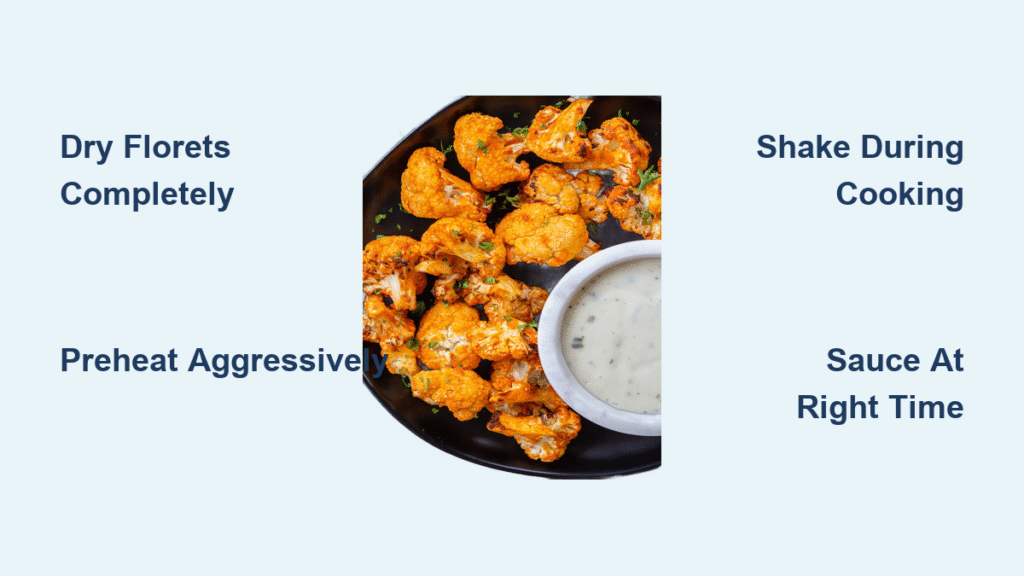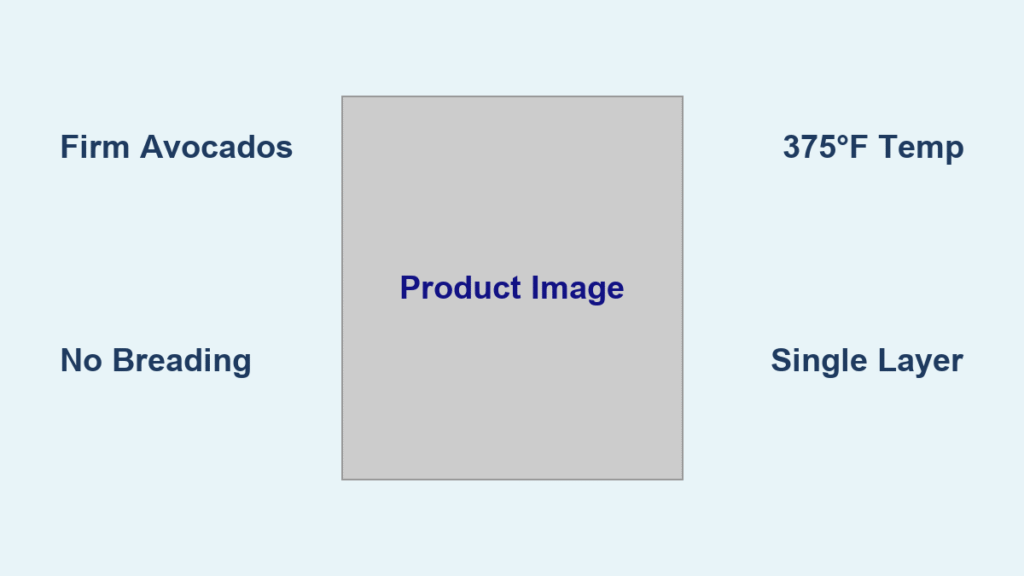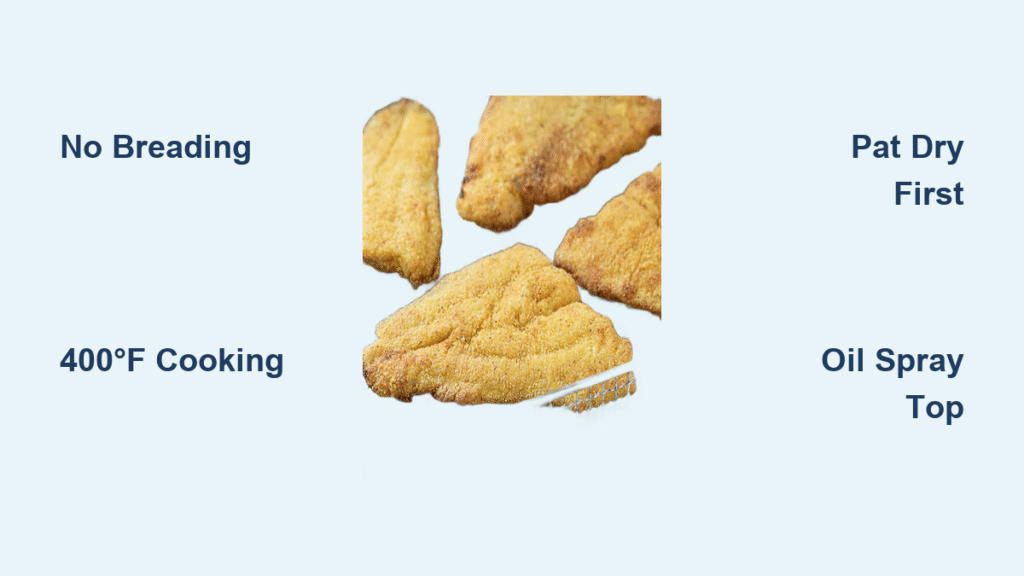Tired of soggy, breaded buffalo cauliflower that falls apart in your air fryer? You’re not alone—nearly 70% of home cooks struggle to replicate restaurant-style crispiness without flour or breadcrumbs. The secret lies in mastering moisture control and precise timing. This air fryer buffalo cauliflower no breading method transforms humble florets into fiery, fork-tender bites with crackling edges in under 15 minutes. Forget messy coatings; we’ll show you how to leverage the cauliflower’s natural starches for maximum crunch while keeping it keto-friendly, vegan-adaptable, and gluten-free.
You’ll discover exactly why skipping breading actually creates superior texture, learn the critical moisture-removal step 90% of recipes omit, and get four battle-tested methods for any air fryer model. Whether you’re meal-prepping for game day or need a 10-minute vegan appetizer, these techniques guarantee restaurant-quality results every time. Let’s solve the soggy-cauliflower dilemma for good.
Classic Three-Ingredient Buffalo Cauliflower Method
This stripped-down approach proves fewer ingredients yield bolder flavor. By eliminating breading, the buffalo sauce penetrates deeper into the cauliflower’s crevices for explosive heat in every bite. You’ll achieve caramelized edges and tender centers using only pantry staples.
Exact Ingredient Ratios for Perfect Balance
- 1 medium cauliflower head (2 pounds, cut into 2-inch florets)
- ½ cup Frank’s RedHot Buffalo Sauce (the vinegar-based tang cuts richness)
- 2 tablespoons melted butter (creates glossy, non-soggy coating)
Pro tip: For extra depth, add ½ teaspoon garlic powder to the sauce mixture—never sprinkle dry spices directly on wet florets.
Critical Step-by-Step Execution
- Preheat aggressively: Crank air fryer to 390°F for 5 minutes. Skipping this causes sticking and uneven cooking.
- Dry florets completely: Pat each piece with paper towels—visible moisture guarantees sogginess.
- Whisk sauce hot: Melt butter fully before mixing with buffalo sauce; cold butter causes clumping.
- Toss in cold bowl: Use a chilled metal bowl to prevent premature steaming during coating.
- Single-layer rule: Arrange florets stem-side down with ½-inch spacing—overcrowding traps steam.
Timing alert: Cook 6 minutes → shake basket vigorously → cook 3-6 more minutes until edges char golden. Under 9 minutes = raw centers; over 12 minutes = burnt tips.
Quick Four-Ingredient Crispiness Method

This high-heat technique delivers charred, blistered edges by leveraging strategic shaking intervals. The secret? Higher temperature with shorter bursts prevents the cauliflower from steaming in its own moisture—critical for compact air fryers.
Precision Temperature and Timing Protocol
- 400°F setting with mandatory shake points:
- 8 minutes: Initial cook (edges begin browning)
- Shake thoroughly: Flip every piece with tongs—don’t just jiggle
- 6 minutes: Mid-cook (caramelization develops)
- Shake again: Rearrange outer pieces to center
- 5 minutes: Final crisping (deep golden crust forms)
- Total time: 19 minutes (hands-off after initial toss)
Warning: For air fryers under 4 quarts, reduce batch size to 4 cups max. Overcrowded baskets yield steamed, not fried, results.
Spice-Enhanced Flavor Maximization Technique

Unlock smoky complexity without overpowering the buffalo signature. Pre-seasoning dry florets ensures spices adhere without sauce dilution—making paprika’s subtle heat shine where breading would mute it.
Flavor-Boosting Modifications
- Pre-dust dry spices: Toss florets with ½ tsp smoked paprika + ½ tsp garlic powder before saucing
- Lower temperature: Cook at 375°F to prevent paprika burn
- Olive oil spray secret: Lightly mist florets pre-saucing for lacquered, shatter-crisp edges
Texture hack: Spray oil creates a moisture barrier so sauce sits on rather than in the cauliflower—critical for preventing sogginess. Cook 10-15 minutes with one shake at 7 minutes.
Vegan and Allergen Adaptation Guide
Frank’s Buffalo Sauce is naturally vegan, but butter substitutes require technique adjustments. Most plant-based butters burn faster—compensate with timing tweaks to maintain crispness.
Dairy-Free Success Protocol
- Butter swap: Use refined coconut oil (not olive oil) for highest smoke point
- Critical timing adjustment: Add 2 minutes to total cook time—vegan fats crisp slower
- Dressing alternatives: Whisk ¼ cup vegan ranch with 1 tsp lemon juice for tangy dip
Allergen alert: Standard blue cheese dressing contains dairy. Verify vegan ranch labels for hidden casein. All no-breading variants are naturally gluten-free.
Pre-Cooking Moisture Elimination Secrets
Cauliflower’s water content is the #1 cause of sogginess. These professional prep steps remove hidden moisture before the air fryer even turns on.
Must-Do Dryness Protocol
- Salt-dry technique: Toss raw florets with ¼ tsp salt, rest 15 minutes, then pat aggressively dry
- Uniform cutting: Trim stems flush—uneven sizes cause some pieces to burn while others stay raw
- Basket prep: Lightly spray with avocado oil (not olive oil) for non-stick results without flavor transfer
Visual cue: Properly dried florets look matte, not glossy. If paper towels pick up moisture, dry 2 minutes longer.
Sauce Application Timing Techniques

When you add sauce determines success. Too early = sogginess; too late = bland bites. Master these two approaches for perfect saturation.
Dual-Method Sauce Mastery
Classic Pre-Cook Toss:
– Whisk sauce while butter is hot (cold butter = clumpy coating)
– Toss florets for 60 seconds until sauce coats every nook
– Immediately load basket—delaying causes moisture buildup
Restaurant-Style Post-Cook Glaze:
– Air fry plain cauliflower 8 minutes at 390°F
– Toss hot florets in reserved warm sauce (¼ cup extra)
– Return to air fryer 2 minutes for lacquered finish
Spice control: For mild heat, mix ⅓ cup buffalo sauce + 1 tbsp extra butter. For X-Hot, add ½ tsp cayenne to the sauce (not dry).
Troubleshooting Soggy or Burnt Results
Fix common failures in under 3 minutes with these targeted interventions. Most issues stem from moisture mismanagement—not air fryer flaws.
Instant Soggy-Cauliflower Fix
Problem: Pale, limp florets after cooking
Cause: Excess surface moisture or sauce overload
Solution: Air fry 3 more minutes at 400°F—watch closely for crisping
Burnt-Edge Prevention System
Problem: Charred tips but raw centers
Cause: Florets cut too small or temp too high
Fix: Next batch: Cut 2.5-inch pieces + reduce temp to 375°F
Golden rule: If edges darken before centers soften, your florets are unevenly sized. Always trim to consistent 2-inch pieces.
Storage and Reheating for Maximum Crispiness
Reheating improperly destroys texture. Follow this protocol to revive day-old buffalo cauliflower with near-fresh crunch.
3-Step Reheating Mastery
- Never refrigerate warm: Cool completely on wire rack (15+ minutes)
- Store dry: Keep extra sauce separate in small container
- Revive correctly: Air fry at 350°F 3-5 minutes—never microwave
Freezing tip: Flash-freeze cooked florets on parchment before bagging. Reheat frozen at 350°F for 6 minutes—no thawing needed.
Equipment-Specific Scaling Guidelines
Your air fryer size dictates batch strategy. Overcrowding causes 95% of failed attempts—these capacity rules prevent disaster.
Model-Specific Batch Limits
| Air Fryer Size | Max Cauliflower per Batch | Shake Frequency |
|---|---|---|
| 3-4 quart | 3 cups florets | Every 5 minutes |
| 5+ quart | 6 cups florets | Every 7 minutes |
| Oven-style | 4 cups per tray | Rotate trays halfway |
Party prep hack: Pre-cut cauliflower and mix sauce ahead, but cook in fresh batches. Doubling sauce quantity for one mega-batch guarantees steamed, not fried, results.
Final takeaway: The magic of air fryer buffalo cauliflower no breading lies in respecting cauliflower’s natural properties—no flour needed when moisture control and precise timing do the work. Master these four methods, and you’ll never serve soggy florets again. For your next game day, pair these fiery bites with celery sticks and vegan ranch for a crowd-pleasing appetizer that’s ready faster than delivery. Craving more? Try our air fryer buffalo broccoli method—same techniques, different veggie.





